Is Your Property Affected by AB-38?
AB-38 Defensible Space for California Properties
Why AB-38 Matters in the Fight Against Wildfires
Wildfires are larger, more intense and takes a lot more resources to extinguish than they were 20 years ago. In fact, wildfires occur 4 times more often, take 5 times longer to suppress and extinguish, and destroy 6 times more land area in recent years.
14 out of 20 of the most destructive wildfires in California have occurred in the last 10 years, with 2018 being the most destructive wildfire season in terms of lives loss and property destruction.
Assembly Bill 38 established that, as of July 1, 2021, a seller of real property located in a High or Very High Fire Hazard Severity Zone must provide the buyer with documentation stating the property is in compliance with defensible space requirements.
Seller shall provide the buyer with a copy of the documentation that complies with the requirements of the local ordinance and information on the local agency from which a copy of that documentation may be obtained.
If you are not sure what these defensible space requirements are, book a full fire risk assessment with Allied Disaster Defense trained fire marshals to provide a report.
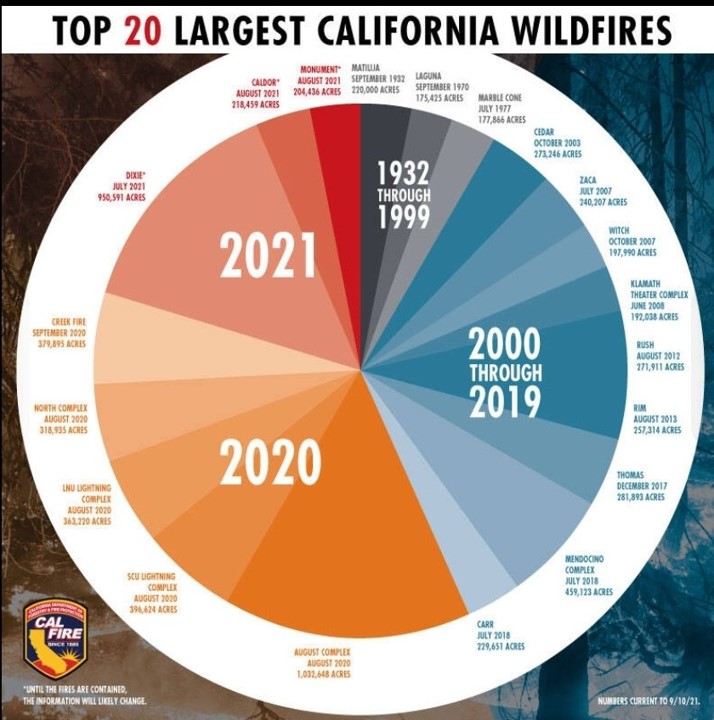
Schedule your Fire Risk Assessment with a Trained Fire Prevention Expert

Home Hardening for AB-38
If the home was constructed before 2020, the seller shall provide information relating to fire hardening improvements on the property and a list of specified features that may make the home vulnerable to wildfire and flying embers and which features, if any, that exist on the home of which the seller is aware.
The law allows, that if documentation demonstrating compliance cannot be obtained by the close of escrow, the seller and buyer can enter into a written agreement showing that the buyer agrees to obtain documentation of compliance within one year of the close of escrow.
Home Hardening Services Allied Disaster Defense Provides:
- Ember-resistant vents
- Ember-resistant gutter guards
- Full home rebuild up to fire standard codes
- Yearly ground application of Long-term Fire Retardant
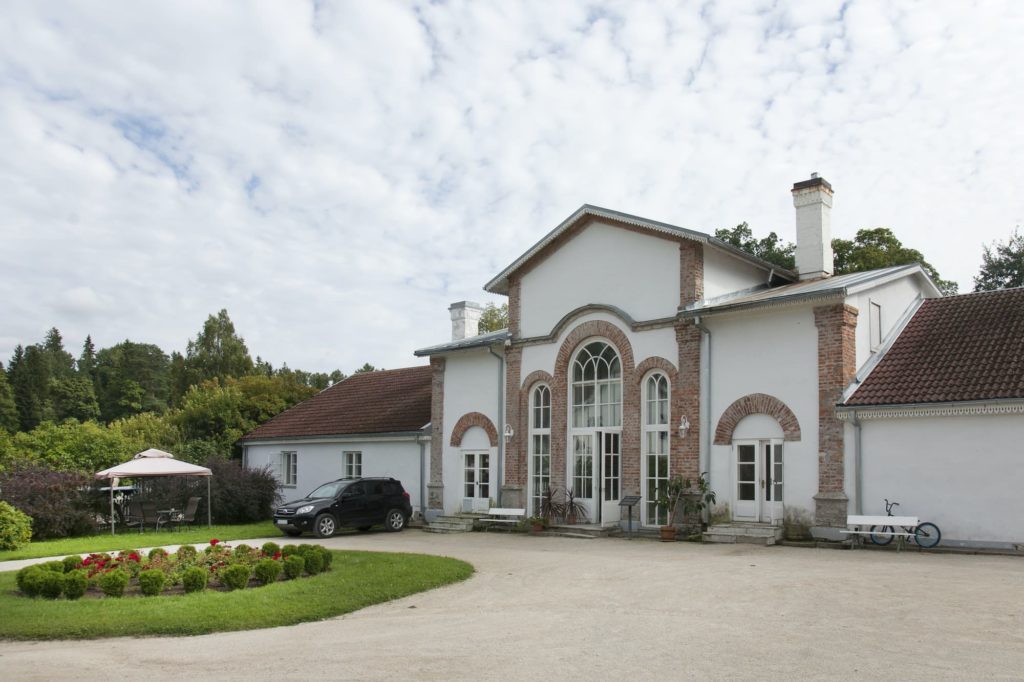
Defensible Space Disclosures with AB-38
Public Resources code §4291 requires that, in order to minimize the risk of fire affecting a building or structure on the property, defensible space around the improvement be maintained within 100 feet of the improvement. Many local governments have enacted a local vegetation management ordinance for that same purpose.
Defensible Space Guidelines:
- Maintain defensible space of 100 feet from each side and from the front and rear of the structure, but not beyond the property line.
- Remove that portion of a tree that extends within 10 feet of the outlet of a chimney or stovepipe.
- Maintain a tree, shrub, or other plants adjacent to or overhanging a building free of dead or dying wood.
- Maintain the roof of a structure free of leaves, needles, or other vegetive materials.
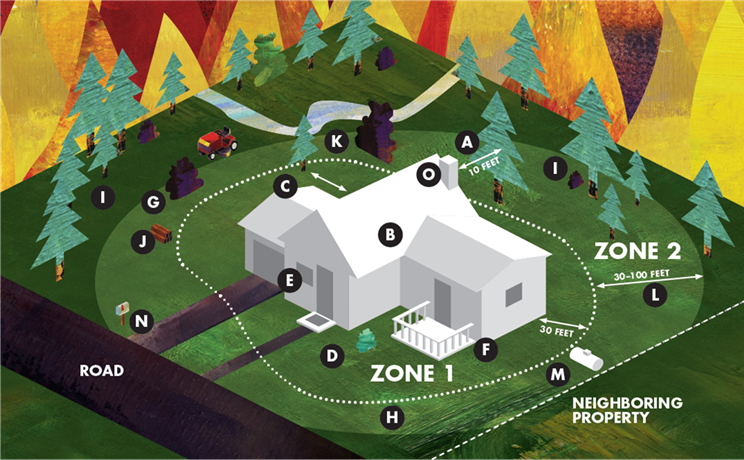
Schedule your Fire Risk Assessment with a Trained Fire Prevention Expert

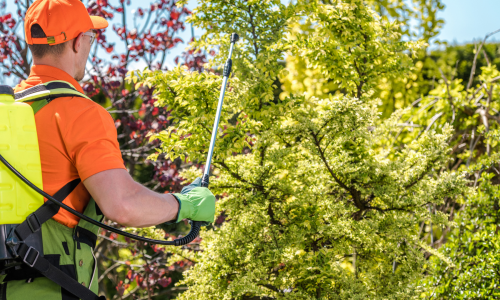
Long-Term Fire Retardant
We utilize the same Fire Retardants used to fight wildfires as the ones dropped in the Fire Department’s airplanes (without the red dye). This gold standard fire retardant is safe and effective to apply to vegetation.
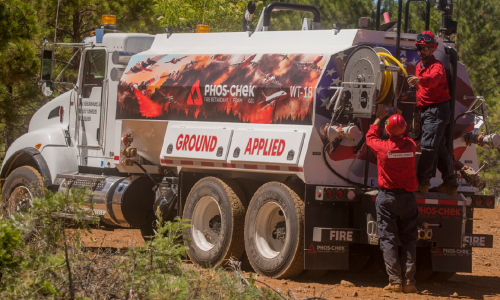
Fire Risk Assessment
We assess the defensible space, combustibles around a home (home ignition zone), fences, decks, building shape, walls, roofs, roof vents, eaves & overhangs.
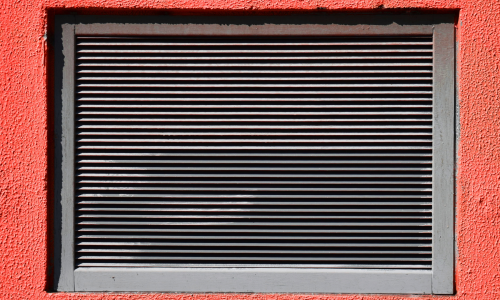
Home Hardening
Home hardening solutions such as ember gutter guards, fire-resistant vents and double pane window glass prevents your home from catching fire through embers slipping through to the interior of the home.
Property and Home Hardening
The construction materials, design elements, and neighboring landscaping all play a role in a home’s potential to withstand a wildfire. Homes that are constructed and built to wildfire-resistant standards are less vulnerable to wildfires and are more likely to survive one. The Home Ignition Zone includes a component called home hardening.
Our Process
• We Conduct a Risk Assessment of the Property
• We Map Out the Hazards and Apply Long-Term Fire Retardant
• We Reapply the Fire Retardant and Add Additional Disaster Prevention Layers
Creating Defensible Space
Defensible space is the buffer you create between your property and the wildland areas that surrounds it. This space is needed to slow or stop the spread of wildfire from embers anad radiant heat. Proper defensible space also provides firefighters with a safe area to defend your home.
Property & Home Hardening
Home hardening solutions including long-term fire retardant, fire resistent construction materials, vents, and windows increase your properties chances of survival exponentially.
What you can do today to be prepared for AB-38
1.Remove all dead dry native brush, weeds, grass, and hazardous vegetation situated within two hundred feet (200) of any structure, regardless of whether said structure is located upon such land or upon adjacent land shall be maintained and cleared of fire hazard.
2. When a slope greater than 25 percent from horizontal plane is located within 200-feet from any structure the vegetation clearance shall be no less than 250-feet. This may include reducing vegetation through thinning, pruning or removal per the Fire Code Official.
3. All native brush, weeds, grass and hazardous vegetation within ten feet (10’) of any combustible fence shall be maintained at a height of not more than three inches (3”) above the ground.
4. Remove all vegetation underneath all decks, platforms and balconies. No combustible debris shall accumulate underneath said areas.
5. Trees shall be trimmed so that the foliage is no closer than 10-feet from the outlet of any chimney.
6. Inorganic mulch, wood chips, or similar combustible products shall not be placed within 15 feet of any structure or within 5 feet of any combustible perimeter fence.
7. All roof structures shall be kept free of substantial accumulations of leaves, needles, twigs, and other combustible matter. Overhanging trees shall not be within 5-feet to any portion of the structures roof edge and maintain vertical clearance. EXCEPTION: Existing trees that are maintained, thinned-out and approved by the Fire Code Official.
8. Remove and safely dispose of all cut or bagged vegetation debris which includes grass, shrubs, trees or similar vegetation.
9. Tree crowns and canopies shall be separated horizontally from other tree crowns and canopies by a minimum of 10-feet. Single grouping of shrubs shall be limited to a 10-foot diameter and spaced 10-feet apart. EXCEPTION: Privacy shrubs that are maintained free of debris and provide a minimum 5-foot clearance to structures.
10. Trees that are taller than 18 feet shall have lower branches trimmed so that no foliage is within 6-feet off the ground. Trees or shrubs less than 18-feet in height shall have lower branches trimmed so that no foliage is within one-third off the ground.
11. Remove dead material from live plants, trees, or other vegetation which include dead and or dry bearded palm fronds. All dead trees and vegetation shall be completely removed from the property.
12. Erosion to hillsides and slopes shall be prevented by the following: (Erosion control from abatement) 1. Dead/dry grass or vegetation on a hillside or slope shall be maintained no taller than 3” in height to prevent disturbance to soil. 2. Dead trees removed on a hillside or slope are permitted to have a stump up to 3 feet in height to prevent disturbance to soil.
13. All vegetation shall be maintained in such a manner to lessen the fuel supply and to augment the spread or intensity of a fire.
Frequently Asked Questions
How long does the Fire Retardant last?
The Long Term Fire Retardant (LTR) will last throughout the rain season but generally half an inch of heavy rain is the standard of our retardant. This will need to be reapplied regularly for optimal use.
Is the Fire Retardant safe to use around vegetation?
Yes! The LTR is actually a fertilizer and safe to use around vegetation.
Where do you spray the Fire Retardant?
Depending on your property, generally we want to spray the first 0-30 feet (the intermediate zone) of your home. With larger properties with a lot of vegetation, we recommend vegetation management and additional application of fire retardants up to 100 feet of the property.
Is the Fire Retardant safe for children, animals and pets?
Yes! The LTR is non-hazardous and poses no risk to humans, vegetation or animals/pets.
Do you spray Fire Retardant onto the home itself?
We spray within the first 5 feet of the home onto any vegetation that may pose a threat. The home itself should be built with fire resistant material and other home hardening solutions like ember proof vent guards and gutter guards. We conduct a home risk assessment to provide you with the best plan of action all around.
Can I water my plants when fire retardant is applied?
We recommend drip hoses or drip lines to water the roots without washing off the retardants.
What is defensible space?
Defensible space is a buffer between your home and the vegetation that surrounds it. This helps to slow or stop the spread of wildfire and provides firefighters a safe area to defend your home.
What is home hardening?
Flying embers from a wildfire can destroy homes up to a mile away. Home hardening is the process of protecting openings and using ember-resistant materials such as fire-resistant vents, gutter guards and double pane window glass to increase the likelihood of survival when wildfire strikes.
Why is the Fire Retardant not pink like the ones dropped off airplanes?
The fire retardant we utilize is Phos Chek, which is the same ones dropped off the airplanes without the pink dye. The pink dye is for the fire fighting teams to see and locate which areas have fire retardants applied. If it was clear, the fire team will have a hard time distinguishing which areas have fire retardants applied.
How do I schedule an on-site assessment?
You can call us with the number on this website or fill out any form. Our team will then reach out to confirm a day and time our fire experts can conduct a risk assessment at your property.
Schedule your Fire Risk Assessment with a Trained Fire Prevention Expert




Contact Us
- 310-620-9442
- 3120 E. Garvey S. West Covina CA 91791
- 24 Hour Emergency Disaster Service
- NFPA Member
